Restoring Your Teeth: Making Your Smile Shine

Good news: tooth decay has significantly decreased over time, thanks to fluoride use and increased patient awareness. Yet, teeth can still face decay, infection, and breakage, and restoring them is essential for their health. With advanced techniques and modern technology, we have more ways than ever to bring a tooth back to its original shape, look, and function.
If your teeth need restoration, know that we'll discuss all available options with you. We'll recommend the most comfortable and least invasive treatment. Your well-being is our top priority when crafting your stunning smile.
Why consider restorative dentistry:
- Enhance Your Smile: Fill gaps, correct imperfections, and make your smile even better.
- Address Unattractive Spaces: Say goodbye to gaps between teeth that you're not fond of.
- Improve Bite Alignment: Correct an improper bite for improved comfort and function.
- Prevent Tooth Loss: Stop the potential loss of a tooth with timely restoration.
- Relieve Dental Discomfort: Put an end to dental pain and discomfort.
- Fix Damaged Teeth: Repair teeth damaged by decay or injury.
- Replace Missing Teeth: Fill the gaps left by missing teeth for better oral health and appearance.
- Upgrade Old Dental Work: Replace outdated dental treatments for a fresh look.
- Restore Normal Eating: Enjoy eating and chewing without worry.
Remember, giving your teeth proper care is vital. Let's keep your smile shining bright!
 Bridges
Bridges
Fixed Bridges: Restoring Your Smile with Stability
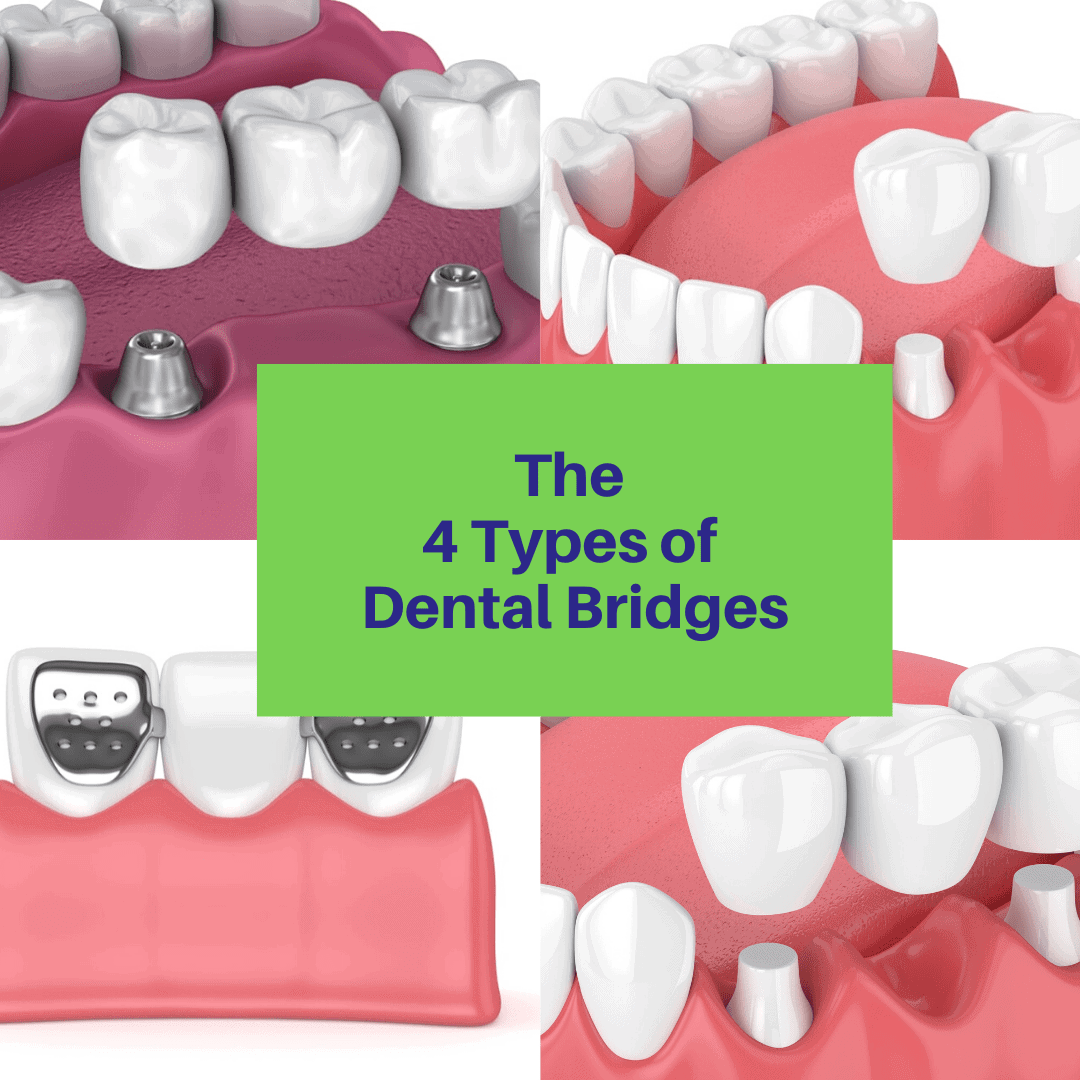
A dental bridge is a non-removable dental appliance that offers an excellent solution for replacing missing teeth.
Various types of bridges are available, and you and your dentist will discuss the best option for your specific case. The "traditional bridge" is a commonly chosen type, often crafted from porcelain fused to metal. This bridge comprises two crowns placed over anchoring teeth (abutment teeth) and connected to pontics (artificial teeth), effectively closing the gap left by one or more missing teeth.
Dental bridges are remarkably durable and can last many years; however, they might eventually need replacement or re-cementing due to regular wear.
Reasons for a Fixed Bridge:
- Filling the gap of missing teeth.
- Maintaining facial shape.
- Preventing remaining teeth from shifting.
- Restoring chewing and speaking abilities.
- Reviving your smile.
- Upgrading from a removable partial denture to a permanent dental appliance.
Getting a Fixed Bridge: What's Involved?
Acquiring a bridge generally involves two or more visits. With numbed teeth, the two anchoring teeth are prepared by removing a portion of enamel to allow for crown placement. A highly accurate impression (mold) is then created and sent to a dental laboratory where the bridge is fabricated. Meanwhile, a temporary bridge is crafted and worn for several weeks until your next appointment.
During the second visit, your permanent bridge will be meticulously checked, adjusted, and cemented for a precise fit. Occasionally, your dentist might temporarily cement the bridge to allow your teeth and tissue to adjust. The permanent cementation will occur later.
After the procedure, you'll receive care instructions. Proper brushing, flossing, and regular dental visits will extend the life of your new, permanent bridge.
 Composite Fillings
Composite Fillings
Enhancing Teeth with Composite Fillings
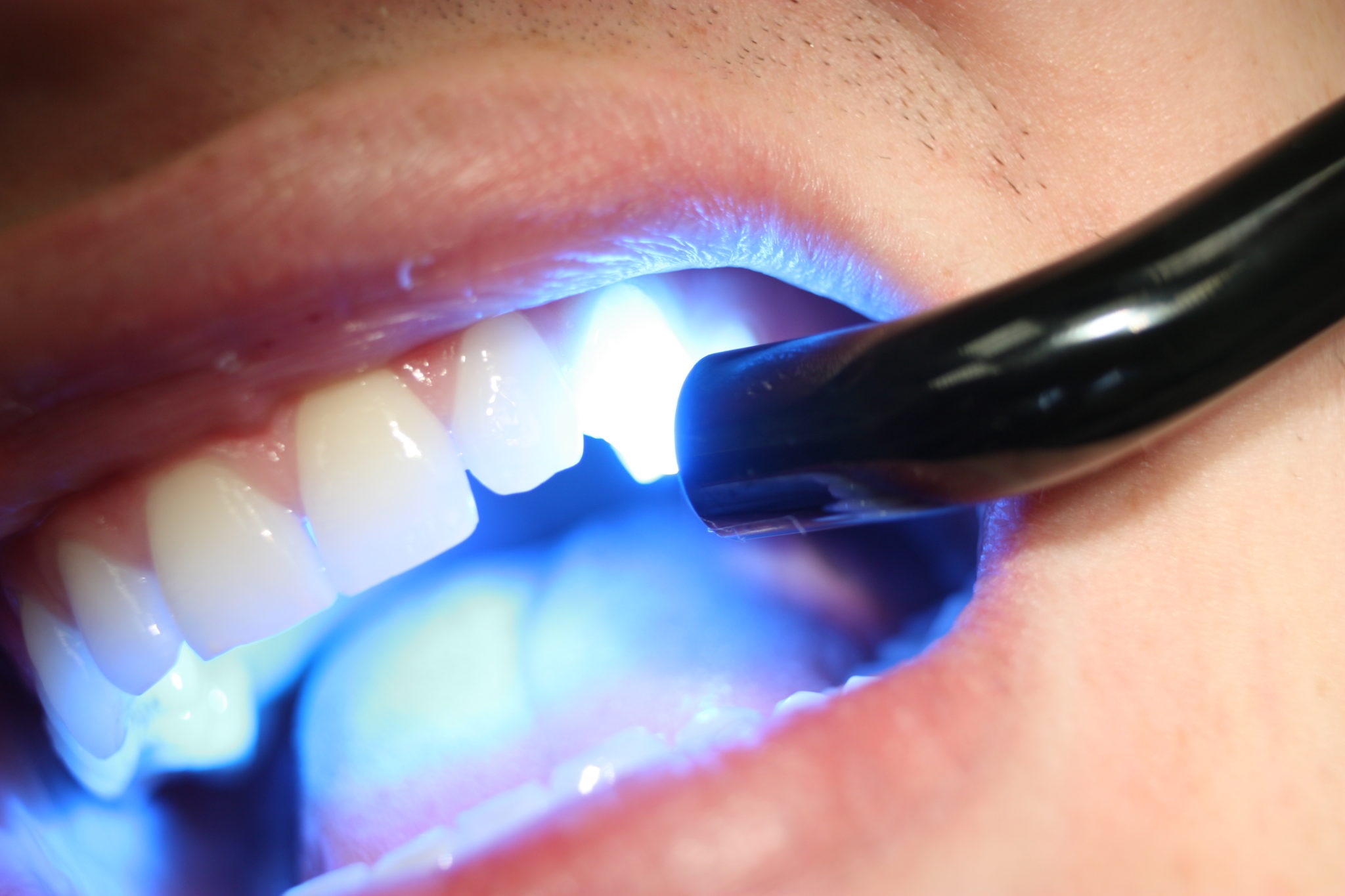
Composite fillings, also known as tooth-colored fillings, are used to repair teeth affected by decay, cracks, fractures, and more. If a portion of your tooth is decayed or damaged, your dentist will remove it and then fill it with a composite filling.
Various filling materials are available, each with its own pros and cons. You and your dentist can decide on the best option for restoring your teeth. Today, composite fillings and silver amalgam fillings are the most commonly used. Composite fillings match the color of your teeth, making them suitable for front teeth or visible areas.
Like most dental restorations, composite fillings aren't permanent and may need replacement someday. They're highly durable and can last many years, providing a lasting and attractive smile.
Reasons for Choosing Composite Fillings:
- Fix Chipped Teeth: Repair teeth with chips.
- Close Tooth Gaps: Fill spaces between teeth.
- Address Cracks/Breaks: Fix cracked or broken teeth.
- Treat Decay: Repair decayed teeth.
- Restore Worn Teeth: Fix worn-down teeth.
How Are Composite Fillings Placed?

Usually done in one visit, composite fillings are placed while the tooth is numb. Your dentist will remove decay as needed and then clean and prepare the area for the filling. If the decay was close to the nerve, a special medication might be applied for added protection. The composite filling will be accurately placed, shaped, and polished to restore your tooth's original form and function.
Initially, you might feel sensitivity to hot and cold after getting composite fillings, but this should fade as your tooth adjusts to the new filling.
After your treatment, you'll receive care instructions. Maintaining good oral hygiene, healthy eating habits, and regular dental visits will help your new fillings last longer.
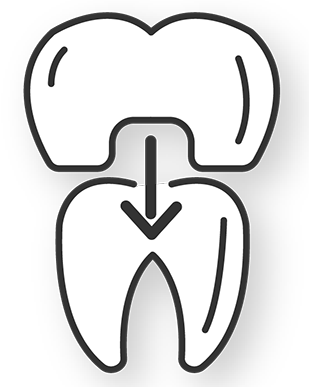 Crowns
Crowns
Restoring Teeth with Crowns (Caps)
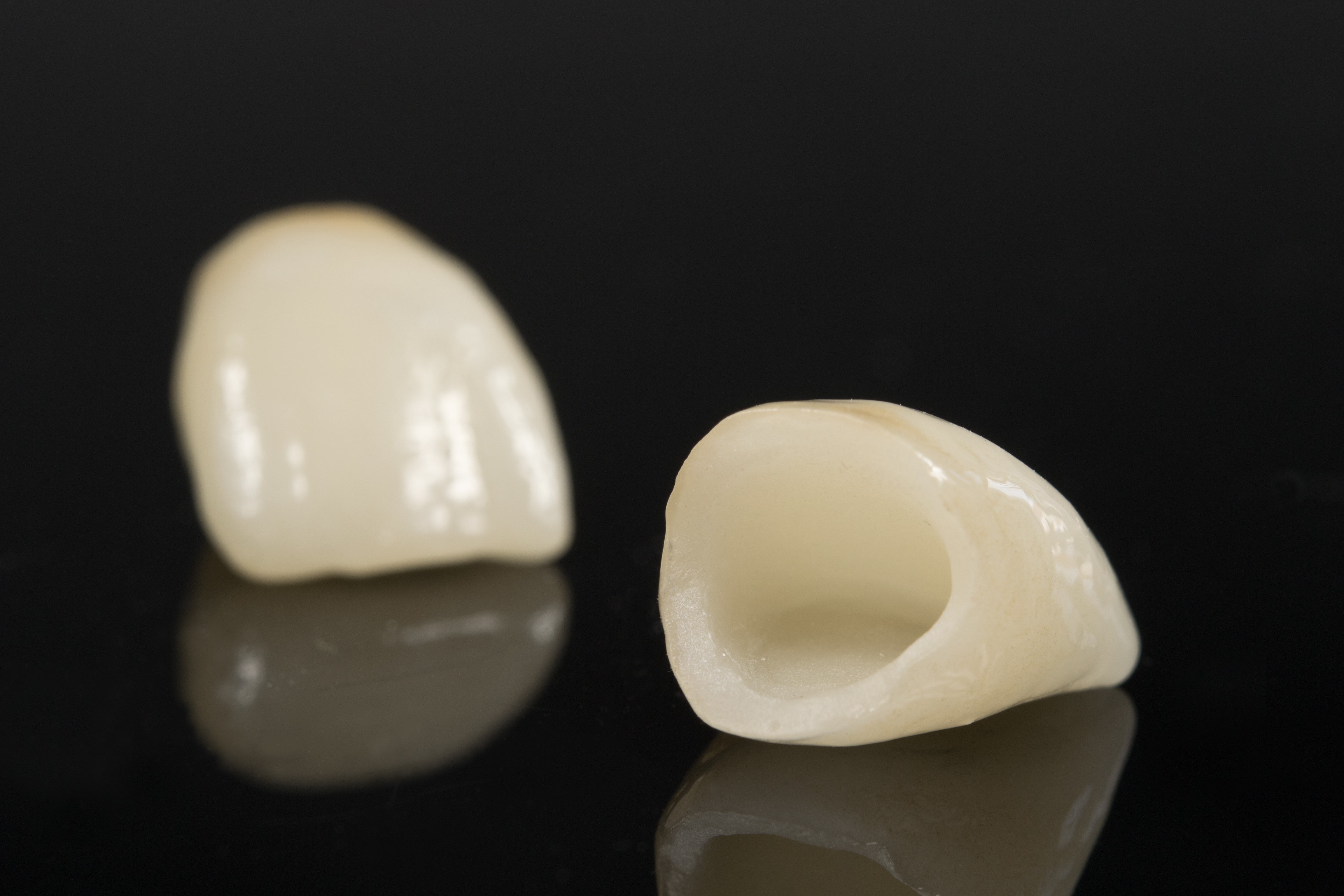
A crown, also known as a cap, is a protective covering that wraps around the entire surface of a tooth, restoring it to its original shape and size. This crown safeguards and reinforces tooth structure that can't be repaired with fillings or other restorations.
Among various crown types, porcelain crowns (tooth-colored crowns) are widely favored. They're remarkably strong and can last for many years, although like most dental restorations, they might require replacement eventually. Porcelain crowns are crafted to match your teeth's shape, size, and color, ensuring a beautiful and long-lasting smile.
Why You Might Need Crowns:
- Fix Broken/Fractured Teeth: Repair teeth with breaks.
- Cosmetic Enhancement: Improve tooth appearance.
- Address Decay: Restore decayed teeth.
- Fix Fractured Fillings: Repair broken fillings.
- Large Fillings: Replace extensive fillings.
- After Root Canal: Protect a tooth that had a root canal.
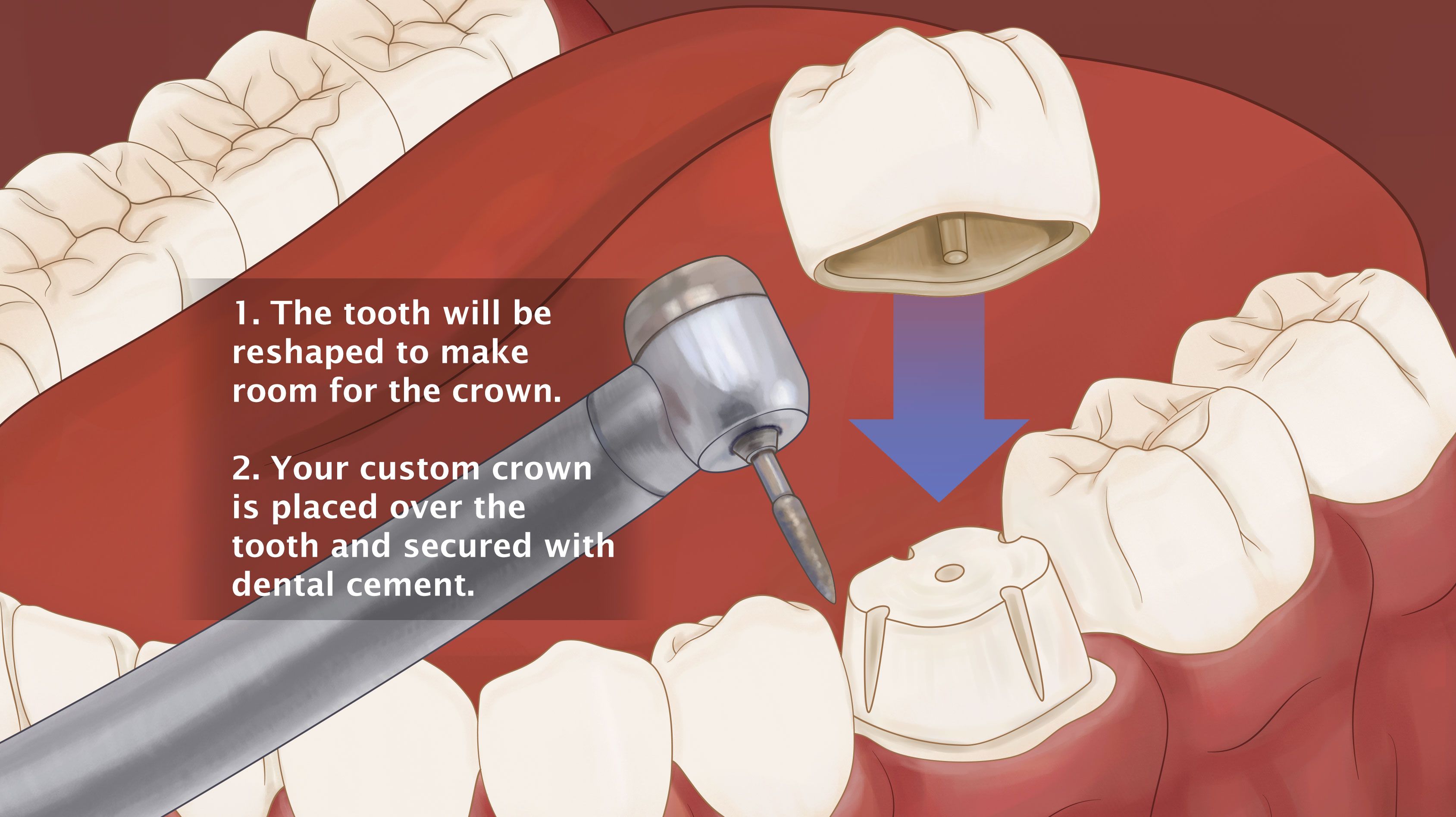
Getting a Crown: What's Involved?
Typically, a crown procedure spans two appointments. During your first visit, precise molds (impressions) will be taken to create a customized crown. A temporary crown, also made from a mold, will be placed on your tooth for about two weeks until your permanent crown is crafted by a dental lab.
While your tooth is numb, your dentist will prepare it by removing decay and shaping it to fit the crown. Afterward, your temporary crown will be temporarily cemented, and your bite will be checked to ensure proper alignment.
At your second appointment, the temporary crown will be removed, your tooth will be cleaned, and the new crown will be precisely placed to ensure correct spacing and alignment.
You'll receive care instructions and be encouraged to maintain regular dental visits to monitor your new crown's condition.
 Dentures
Dentures
Dentures & Partial Dentures: Restoring Your Smile
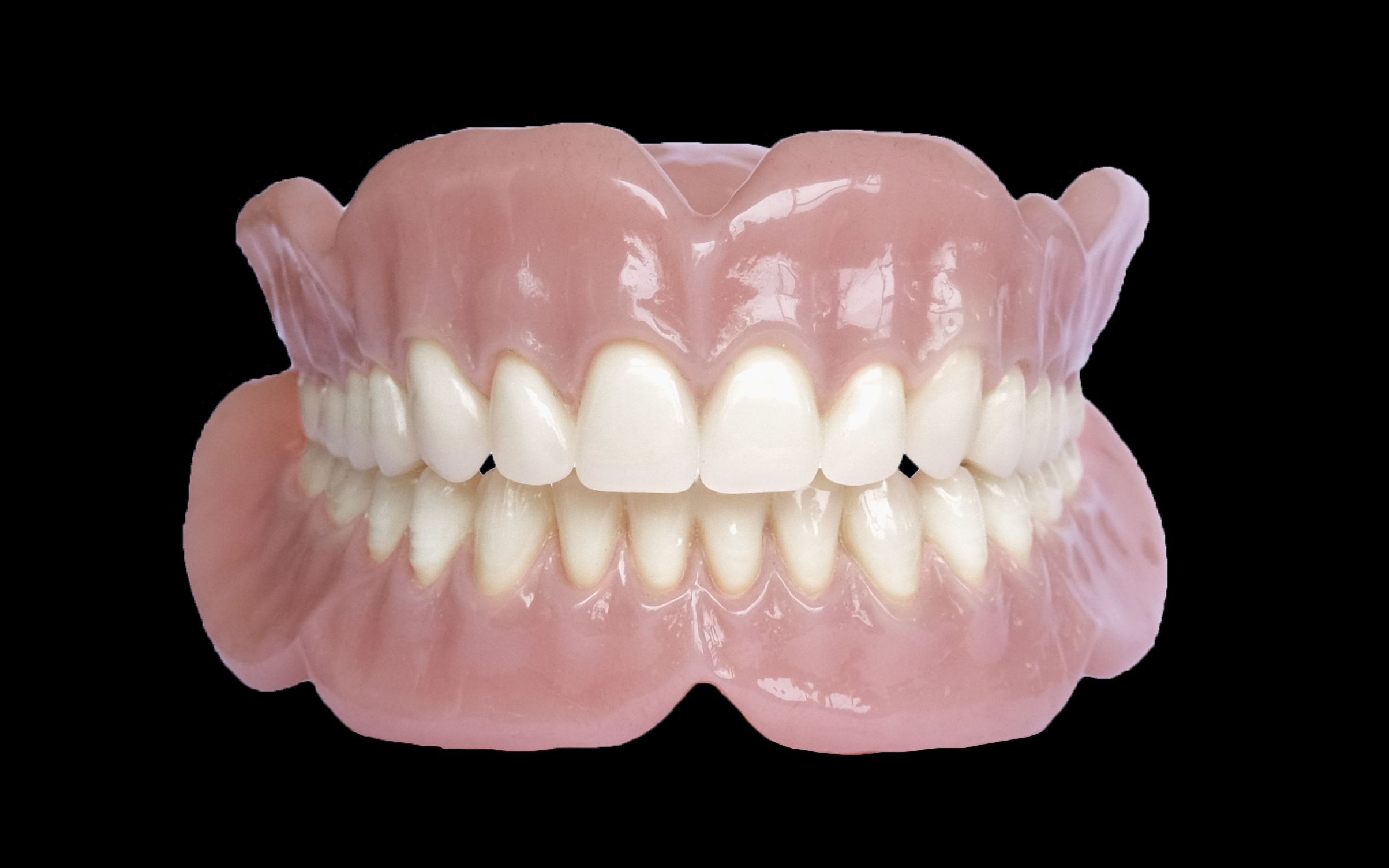
A denture is a removable dental device used to replace missing teeth and the surrounding tissue. These appliances are crafted to closely resemble your natural teeth, potentially enhancing your smile.
There are two types of dentures - complete and partial dentures. Complete dentures are utilized when all teeth are missing, while partial dentures are employed when some natural teeth are present. Partial dentures not only fill gaps left by missing teeth but also prevent other teeth from shifting.
Complete dentures can be either "conventional" or "immediate." Conventional dentures are made after teeth are removed and gum tissue heals (typically 4 to 6 weeks). During this period, patients go without teeth. Immediate dentures, on the other hand, are crafted in advance and placed right after teeth extraction, avoiding the need for toothlessness during healing. Adjustments become necessary as tissues shrink and heal.
Dentures are durable but may require remaking, repairing, or readjusting due to normal wear and tear.
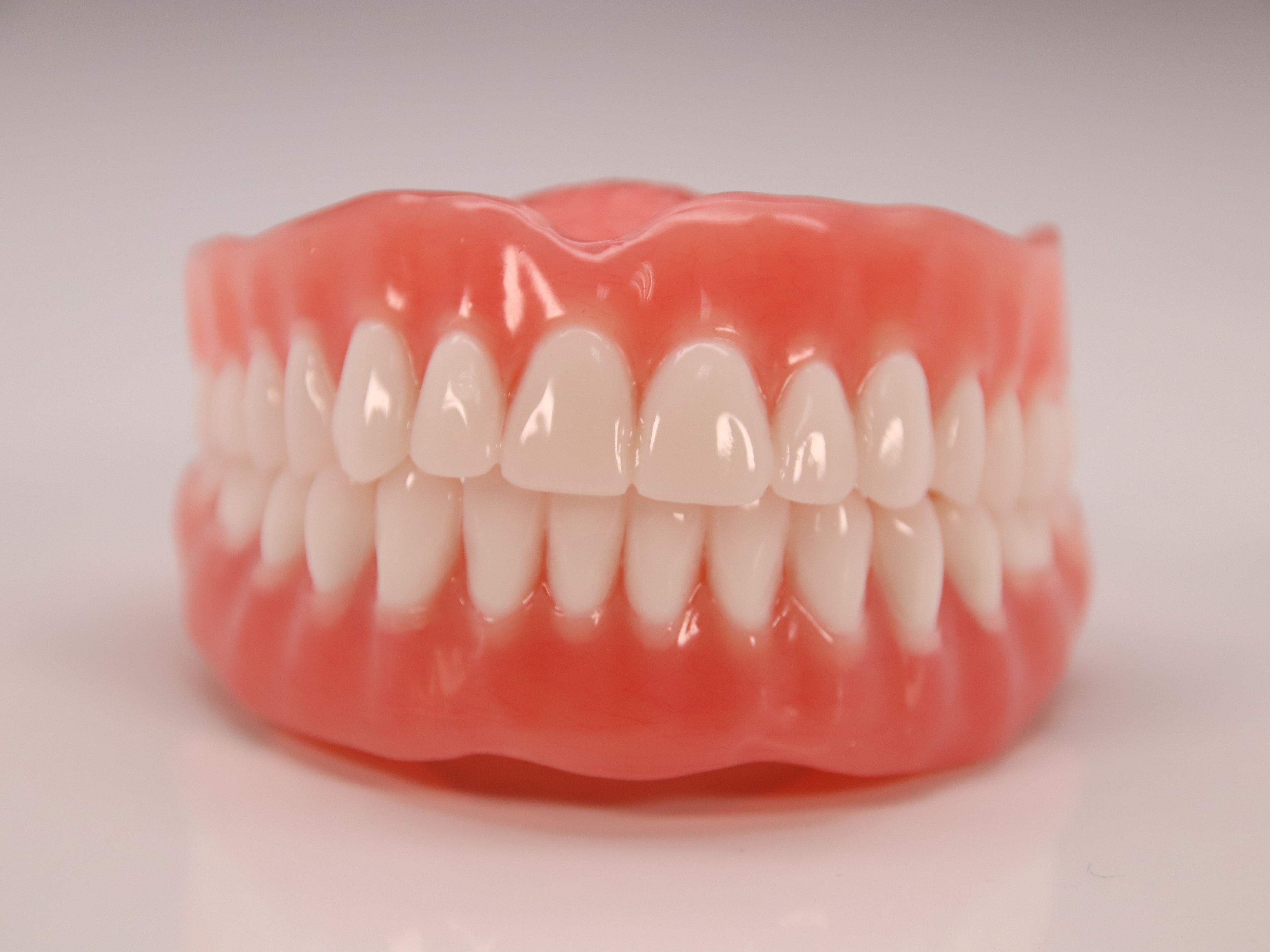
Reasons for Dentures:
- Complete Denture: Loss of all teeth in an arch.
- Partial Denture: Loss of several teeth in an arch.
- Enhancing smile and facial appearance.
- Improving chewing, speech, and digestion.
Getting Dentures: What's Involved?
The denture process involves multiple appointments, often spanning several weeks. Accurate impressions and measurements are taken to create your custom denture. Several "try-in" appointments might be needed to ensure the proper shape, color, and fit. During the final visit, your dentist will adjust and place the completed denture, ensuring a comfortable and natural fit.
Initially, you may experience increased saliva flow, mild soreness, and possible difficulty in speech and chewing. These discomforts will gradually subside as your muscles and tissues adjust to the new dentures.
You'll receive care instructions for your new dentures. Proper cleaning, good oral hygiene, and regular dental visits will contribute to the longevity of your dentures.
 Onlay's
Onlay's
Enhancing Teeth with Onlay Restorations
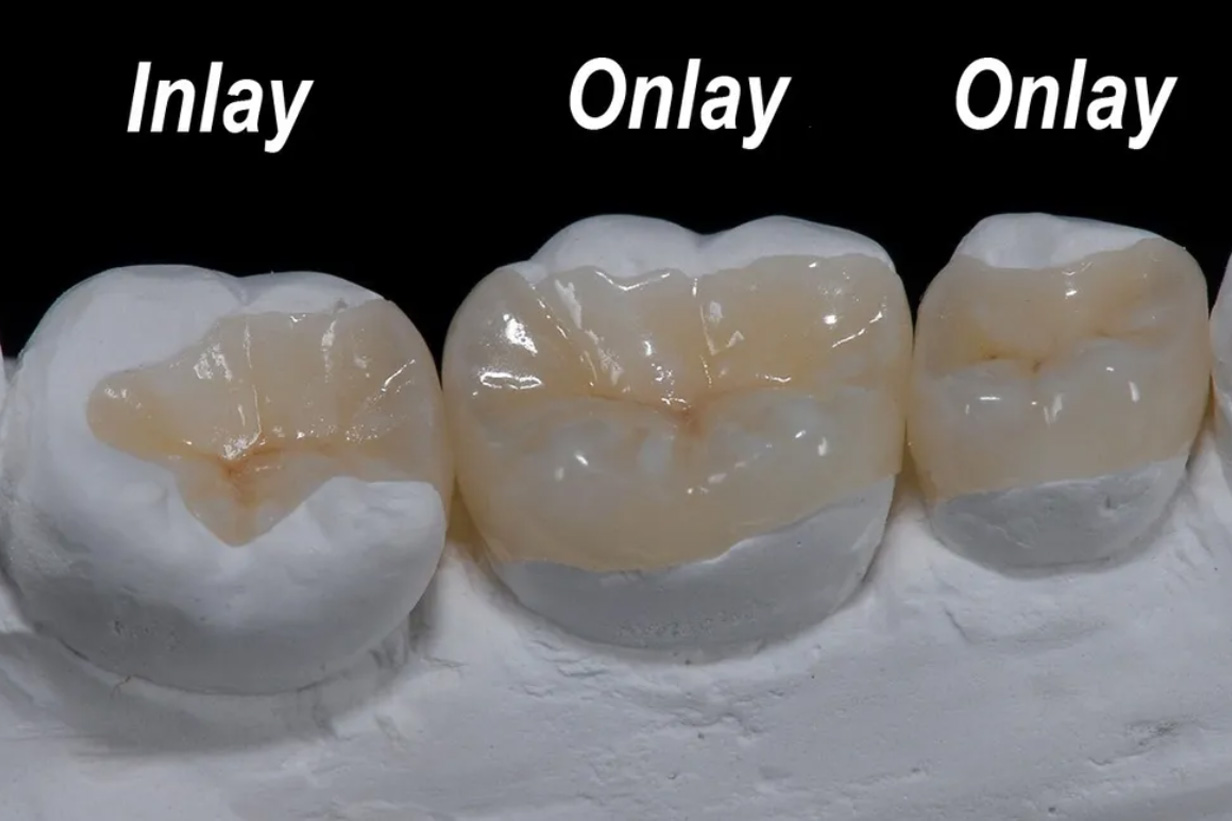
An onlay restoration is a customized filling made from materials like composite, gold, or tooth-colored porcelain. Sometimes known as a partial crown, it's crafted by dental experts and permanently affixed to your tooth by your dentist.
Onlays are great for conservatively repairing teeth with large damaged fillings, decay, or injury. They're a smart alternative to crowns as they require less tooth removal during preparation. Onlays are similar to inlays but cover more, including one or more chewing cusps.
Though onlays are durable, they might need replacing in the future, like most dental restorations. Nonetheless, they're long-lasting and provide a beautiful smile for many years.
Why Consider Onlay Restorations:
- Fix Broken Teeth: Repair teeth that are fractured or broken.
- Cosmetic Boost: Enhance your smile's appearance.
- Address Decay: Treat teeth with decay issues.
- Replace Fractured Fillings: Repair fractured or damaged fillings.
- Restore Large Fillings: Fix teeth with large fillings.

What's Involved in Getting an Onlay?
Typically, getting an onlay involves two appointments. During the first visit, impressions will be taken to create your custom onlay and a temporary restoration.
While your tooth is numb, the dentist will remove any decay or old filling materials. They'll then clean and carefully prepare the area, shaping it to fit the onlay. A temporary filling will protect your tooth while the lab creates your onlay.
At your second appointment, the new onlay will be precisely cemented in place. A few adjustments might be made to ensure a proper fit and comfortable bite.
After your treatment, you'll receive care instructions. Maintaining good oral hygiene, following a balanced diet, and regular dental visits will help extend the life of your new onlay.
 Root Canal
Root Canal
Root Canal Therapy: Saving Your Tooth with Precision
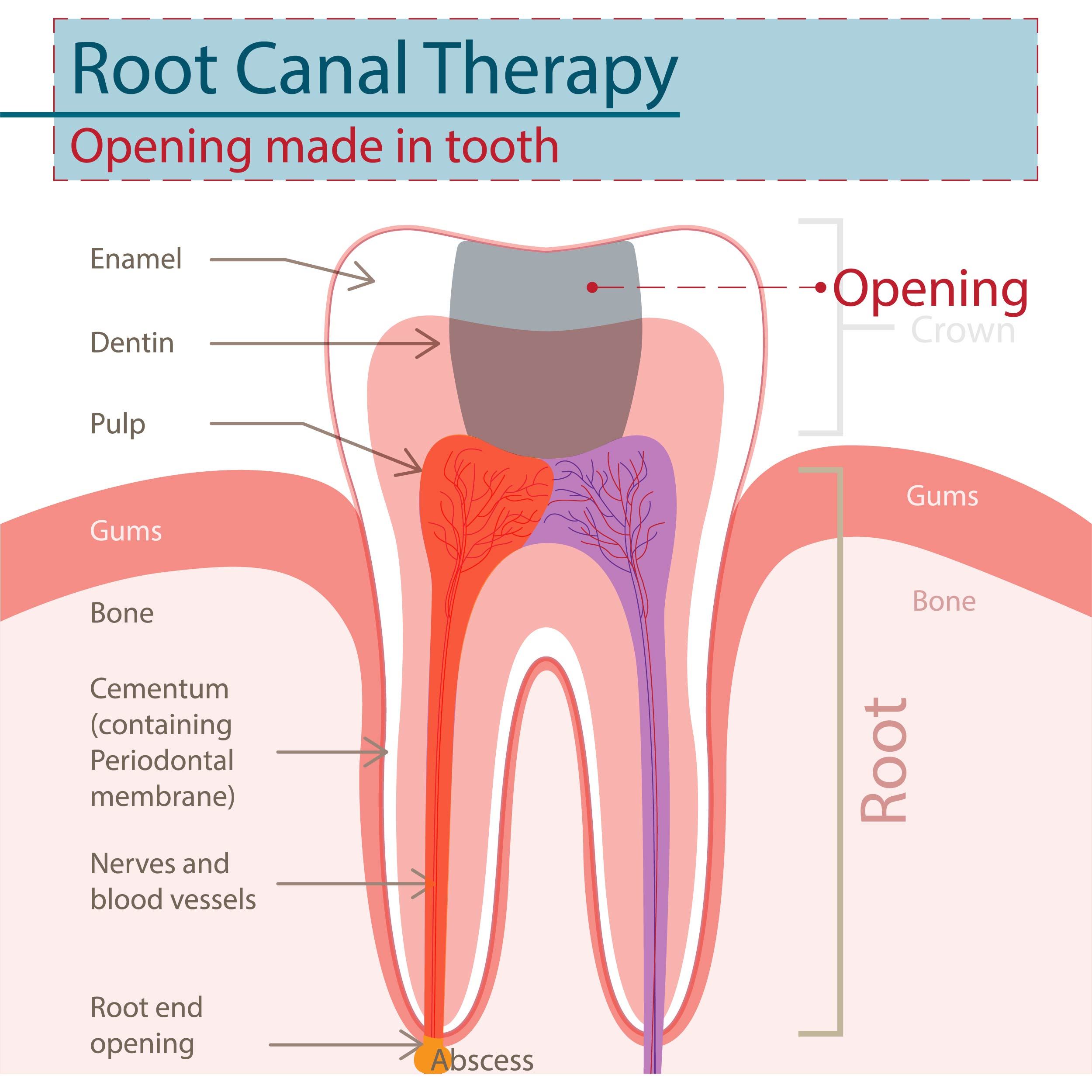
Root canal therapy becomes necessary when a tooth's nerve is affected by decay or infection. To salvage the tooth, the pulp (living tissue inside the tooth), nerves, bacteria, and any decay are removed. The resulting space is then filled with specialized dental materials that restore the tooth to its optimal function.
Opting for a root canal on a compromised tooth is the best approach to save it from dying and needing removal. While some may think that extracting a problem tooth is the solution, it's crucial to understand that pulling a tooth can lead to more expenses and significant issues for neighboring teeth.
Root canal treatment boasts high success rates and often provides a lifelong solution. Occasionally, a tooth might require re-treatment due to new infections.
Indications for Possible Root Canal Therapy:
- An abscess (pimple) on the gums.
- Sensitivity to hot and cold.
- Severe toothache pain.
- Swelling and/or tenderness.
- Sometimes no symptoms are evident.
Reasons for Root Canal Therapy:
- Decay has penetrated the tooth pulp.
- Infection or abscess has formed within the tooth or root tip.
- Tooth injury or trauma.
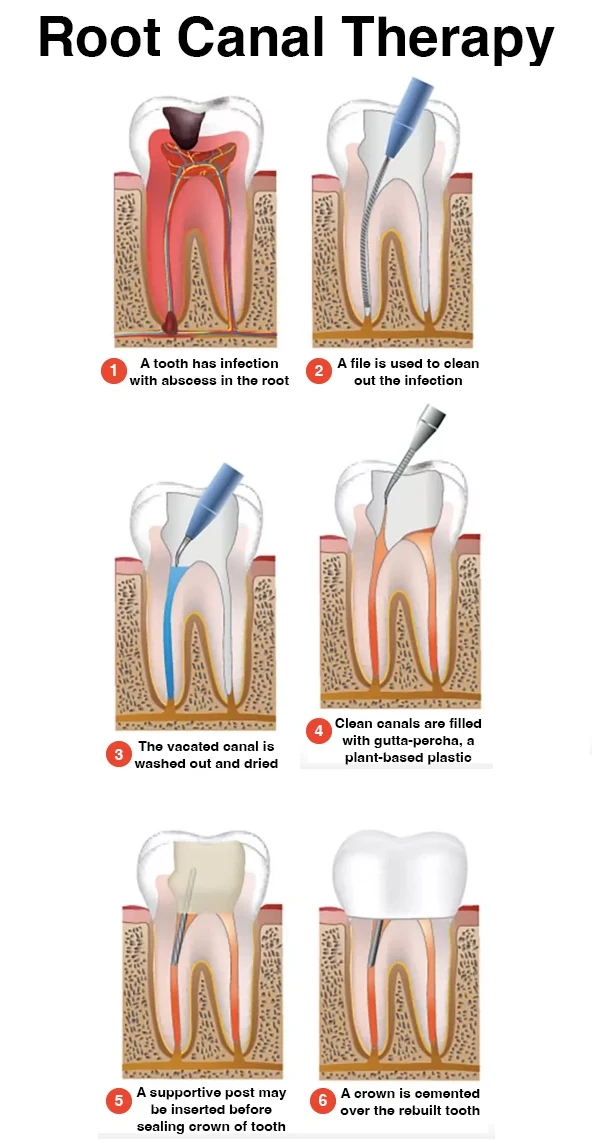
What's Involved in Root Canal Therapy?
A root canal procedure typically necessitates one or more appointments and can be performed by a dentist or endodontist (a root canal specialist).
The tooth will be numbed, and a rubber dam will be placed around it to maintain a dry environment. An access opening will be created on the tooth's top, and root canal files will be used to gradually remove the pulp, nerve tissue, bacteria, and potential decay. If there's decay, it will also be removed using specialized dental instruments.
Once the tooth is thoroughly cleaned, it will be sealed with a permanent filling or a temporary filling if more appointments are required.
At the next appointment, usually around a week later, the tooth's roots and inner cavity will be filled and sealed with specialized dental materials. A filling will be placed to cover the opening on top of the tooth. Additionally, all teeth receiving root canal treatment should be fitted with a crown (cap) to protect and prevent breakage while restoring full function.
After treatment, tooth sensitivity may persist but will gradually subside as inflammation recedes and the tooth heals.
You'll receive care instructions following each appointment. Embracing good oral hygiene habits and regular dental visits will ensure the longevity of your root canal treatment.
